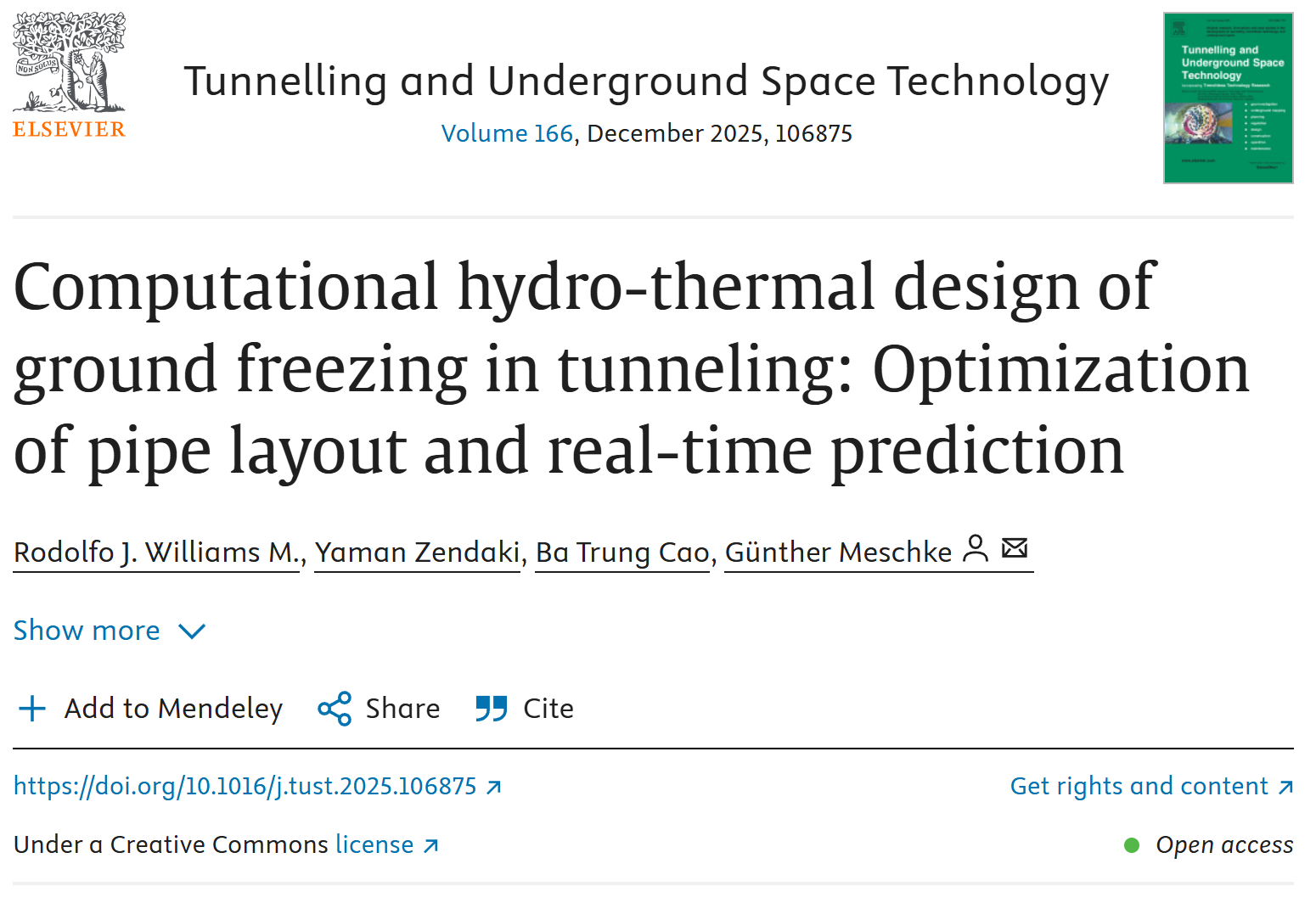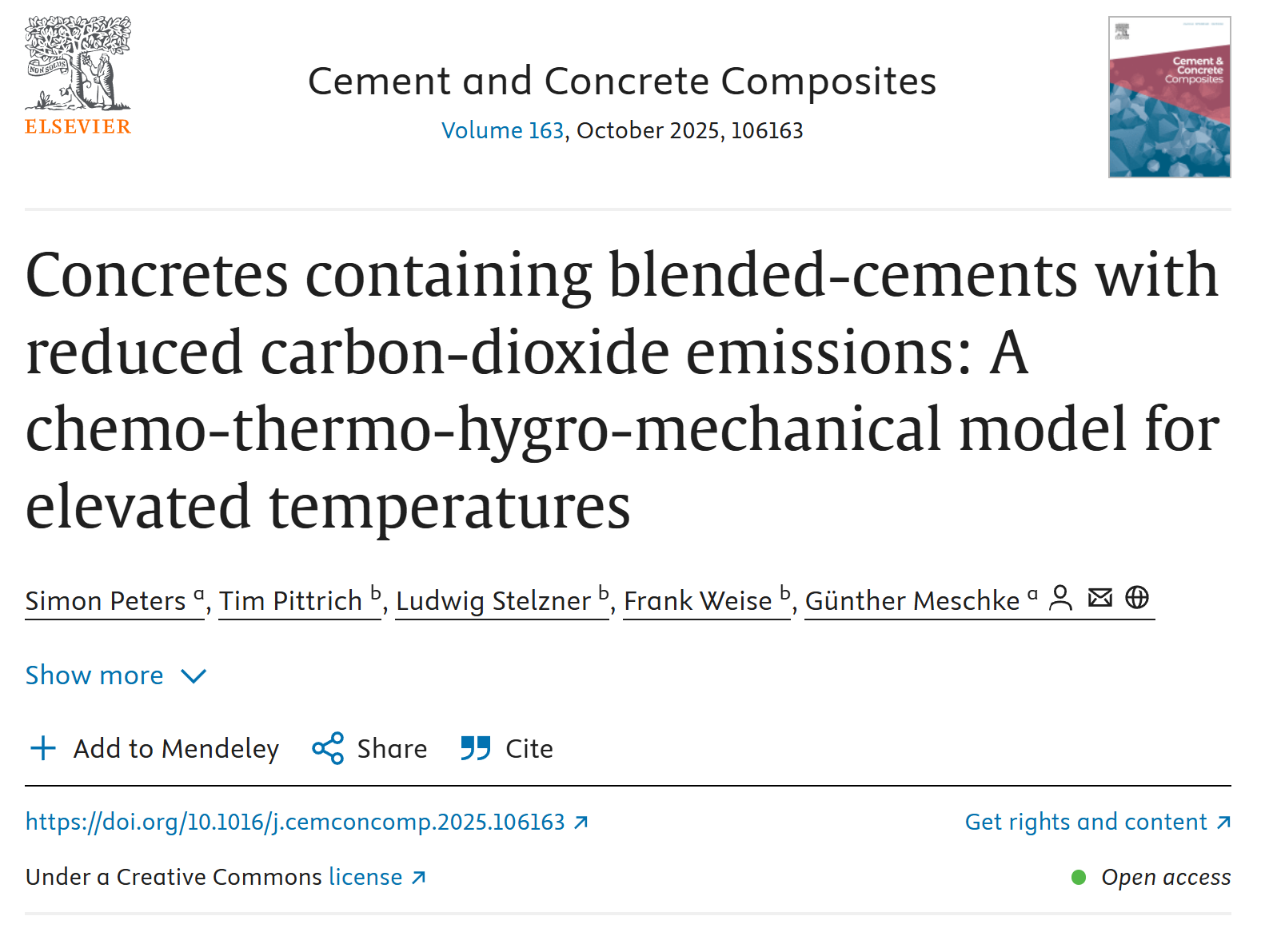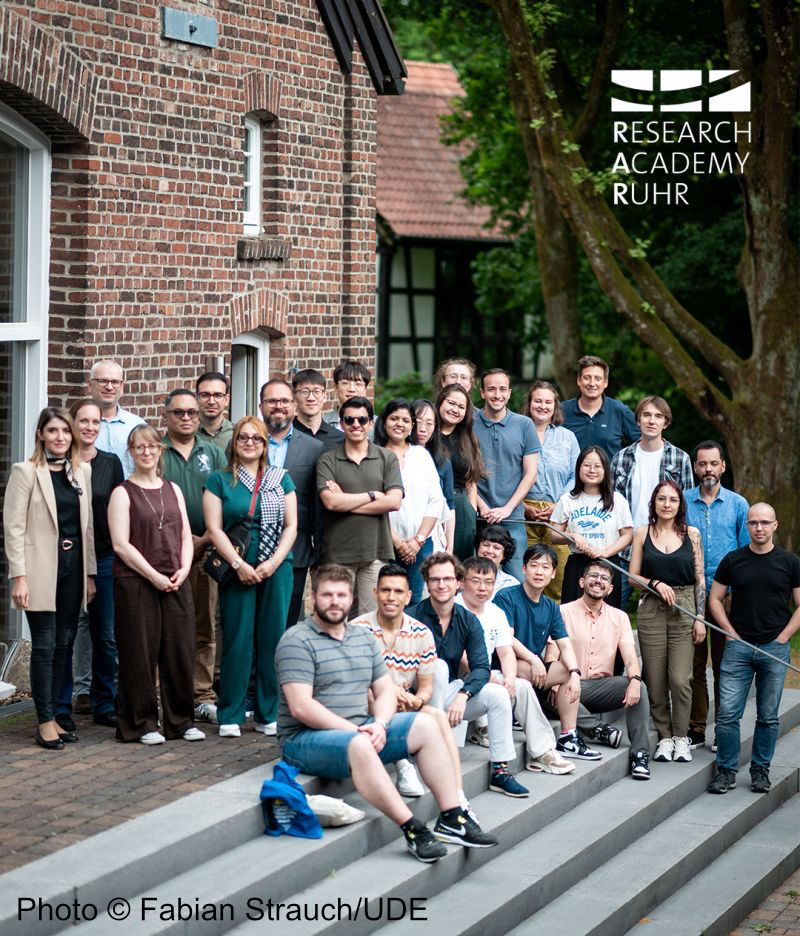
The open access paper titled "Computational hydro-thermal design of ground freezing in tunneling: Optimization of pipe layout and real-time prediction" has been witten by Rodolfo Javier Williams Moises, Yaman Zendaki, Ba Trung Cao, and Günther Meschke.
It is now published in "Tunnelling and Underground Space Technology" by Elsevier.
Abstract:
Artificial ground freezing is used in tunneling for temporary ground improvement mainly to control the groundwater flow and to provide excavation support. The principle of ground freezing is based on freeze pipes drilled into the ground where a coolant flows through the freeze pipes. In tunneling, artificial ground freezing is applied to form a closed arch of frozen ground around the tunnel. However, high groundwater seepage can delay the formation of this frozen arch, or even prevent it entirely, which can lead to unsafe temporary frozen ground support. In this work, we propose a computational design strategy to systematically reduce the freezing time by optimizing the layout of freeze pipes. The strategy includes a computational model able to simulate the freezing process for various pipe arrangements, and the generation of a machine learning model of the freezing process trained by means of virtual, simulation-based data to allow real-time predictions. This surrogate model is constructed based on the combination of Proper Orthogonal Decomposition and Radial Basis Functions, while the freezing process itself is simulated with a hydro-thermal finite element model. Using the surrogate model, possible pipe layouts are rapidly evaluated and optimized in real-time by means of the Particle Swarm Optimization approach, identifying the optimal arrangement of freezing pipes for given groundwater flow conditions which lead to the shortest freezing time. The computational design framework for optimization of freeze pipe layout is integrated into an in-house user-friendly software which performs real-time predictions within a parametric design space.
The open access paper is available here: https://doi.org/10.1016/j.tust.2025.106875

The latest article titled “Concretes containing blended-cements with reduced carbon-dioxide emissi
more...
As part of the Research Academy Ruhr's more...